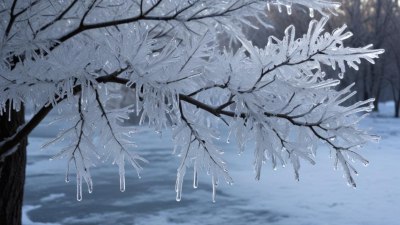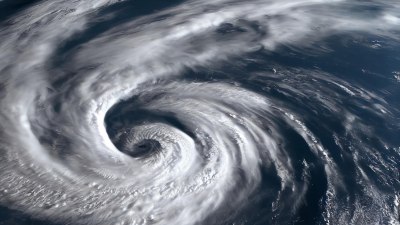What Causes Ice to Form on Trees
Discover the fascinating reasons behind ice formation on trees and its impact on the ecosystem.

The formation of ice on trees is a captivating phenomenon that typically occurs during winter months or in regions where temperatures drop below freezing. Understanding what causes this ice formation involves delving into meteorological principles, tree biology, and environmental conditions. Various factors contribute to the icing process, and each plays a significant role in how ice accumulates on tree branches and foliage. This article will explore these causes in detail, shedding light on the mechanics behind this natural occurrence.
To understand ice formation, we must first look at the conditions necessary for ice to develop. Typically, this process begins when the air temperature falls below 32°F (0°C). When precipitation occurs, whether as rain or snow, it may freeze upon contact with the cold surfaces of tree branches, creating ice. This scenario often manifests as freezing rain, whereby raindrops become supercooled while descending, remaining liquid until they touch the icy surfaces of trees and instantly freeze. This creates a dense layering of ice over the branches.
Another principal factor in ice formation is humidity. Higher humidity levels in the air can contribute to more moisture and, subsequently, increased likelihood of freezing precipitation. When the air has ample moisture and the temperature is conducive to freezing, trees become likely subjects for ice accumulation. The type of precipitation plays a critical role; freezing rain results in a more substantial build-up compared to snow, which can blow off tree branches without forming ice.
Trees can also play a significant role in how and why ice forms on their surfaces. The structure of a tree, including the arrangement of its branches and leaves, can influence ice accumulation. For example, evergreen trees, having needles instead of broad leaves, may offer less surface area for ice to build up compared to deciduous trees. However, the thick canopy of evergreens can also trap moisture, creating a microclimate that may favor more ice formation during certain weather events.
Moreover, tree health impacts how well it can endure ice formation. A healthy tree with robust branches is typically more resilient to the weight of accumulated ice than one that has suffered from diseases or damage. Stress factors, such as drought, poor soil conditions, or pest infestations, can make a tree more susceptible to damage from ice. Understanding how these factors interconnect is crucial for arborists and outdoor enthusiasts alike.
Freezing Rain and Ice Storms
Freezing rain and ice storms are among the most common culprits behind ice forming on trees. These weather events occur when warm air overlies a layer of cold air at the surface. As precipitation falls from the warmer air above, it remains liquid in the upper atmosphere but freezes as it encounters the cold surfaces below, like tree branches. This causes the ice to form rapidly, creating significant ice layers that can weigh down tree branches. Sometimes, the accumulation can reach as much as several inches, leading to breakage or bending of branches under the weight.
Ice storms can cause extensive damage, not only to trees but also to power lines and infrastructure. Heavy ice accumulation can snap power lines, disrupt transportation, and lead to long-lasting power outages. The weight of the ice may cause trees to split or uproot, impacting the local ecosystem. The aftermath of severe ice storms can change landscapes, as fallen trees alter habitats for various wildlife.
Temperature Fluctuations
Rapid fluctuations in temperature also play an integral role in the formation of ice on trees. For instance, a sudden drop from slightly above freezing to below can result in the rapid freezing of moisture on tree surfaces. In these conditions, ice can form quickly, creating a carapace of ice around branches, leaves, and bark. Conversely, daytime heating can cause the melting of accumulated ice, which can then freeze again overnight as temperatures drop. This continuous process can lead to multiple layers that build up over time.
In milder winters, temperature variations may be frequent, leading to increased chances of ice forming and refreezing on trees. The ongoing cycle of melting during the day and freezing at night creates a dynamic environment where trees are subjected to different stressors. This may make them more prone to damage, as the repeated expansion and contraction weakens branches over time.
Impact of Ice Formation on Trees
The impact of ice formation on trees can be both detrimental and beneficial. On the one hand, a heavy ice burden can lead to branch breakage and increased susceptibility to diseases due to wounds inflicted by ice impacts. Ice can also affect a tree's ability to photosynthesize, especially if significant limb loss occurs. On the other hand, ice formation can help trees by protecting them from harsher environmental conditions. The insulating layer of ice can sometimes shield branches from extreme cold, potentially preserving the tree's health.
In some environments, certain trees have adapted to withstand ice accumulation. For instance, species such as birch and sycamore tend to have flexible branches, helping them to bend rather than break under the weight of ice. This ability not only allows them to endure ice storms but also helps to maintain their structural integrity over time. Trees that grow in regions prone to ice are more likely to develop adaptive traits that enhance their resilience.
In conclusion, the formation of ice on trees is a fascinating outcome of various interacting natural processes, melding meteorological factors with tree biology. Freezing rain, humidity, temperature fluctuations, and the inherent qualities of trees work together to create this endearing yet sometimes destructive winter spectacle. Understanding ice formation is crucial not only for appreciating the beauty of winter landscapes but also for preparing for the potential challenges they may bring. As climate patterns continue to evolve, ice formation on trees will remain a subject of study within both scientific and environmental contexts, shedding light on our changing ecosystems.











